Pattern Play: Mastering the Mix
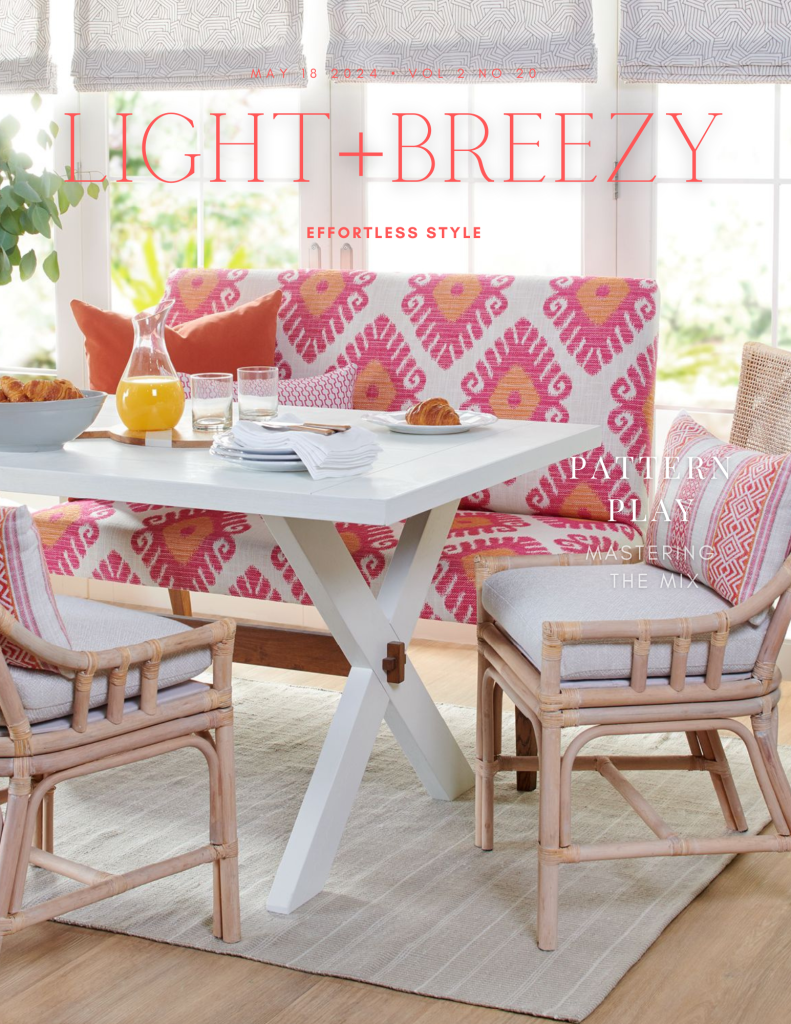
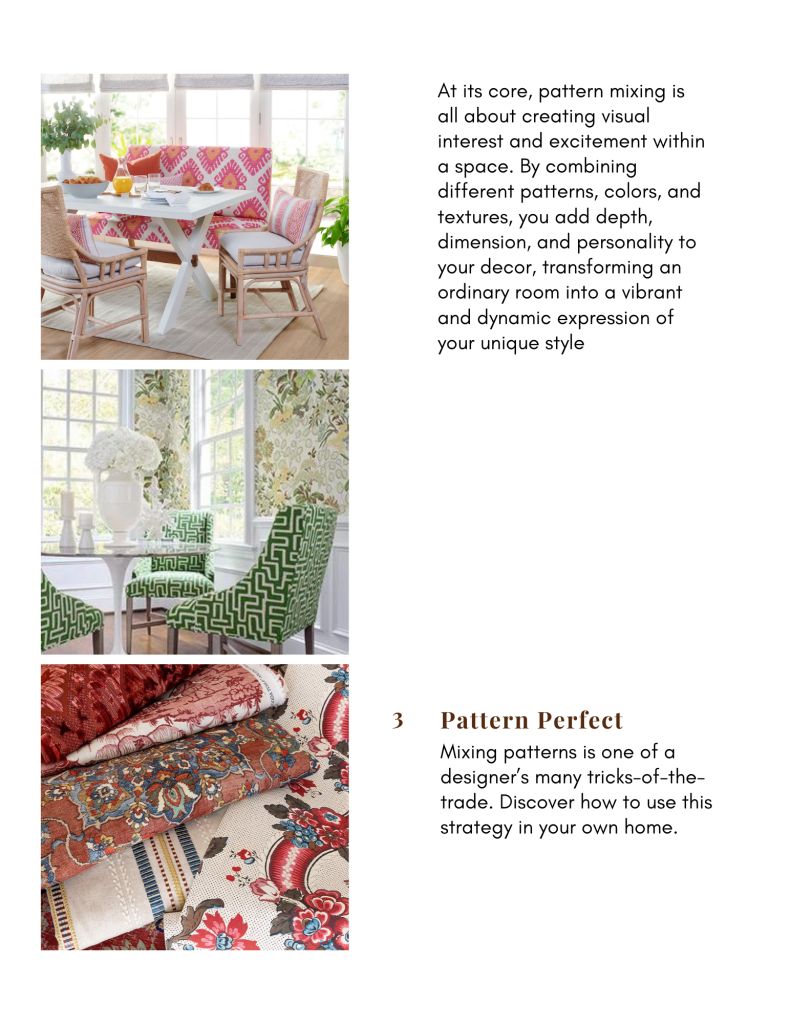
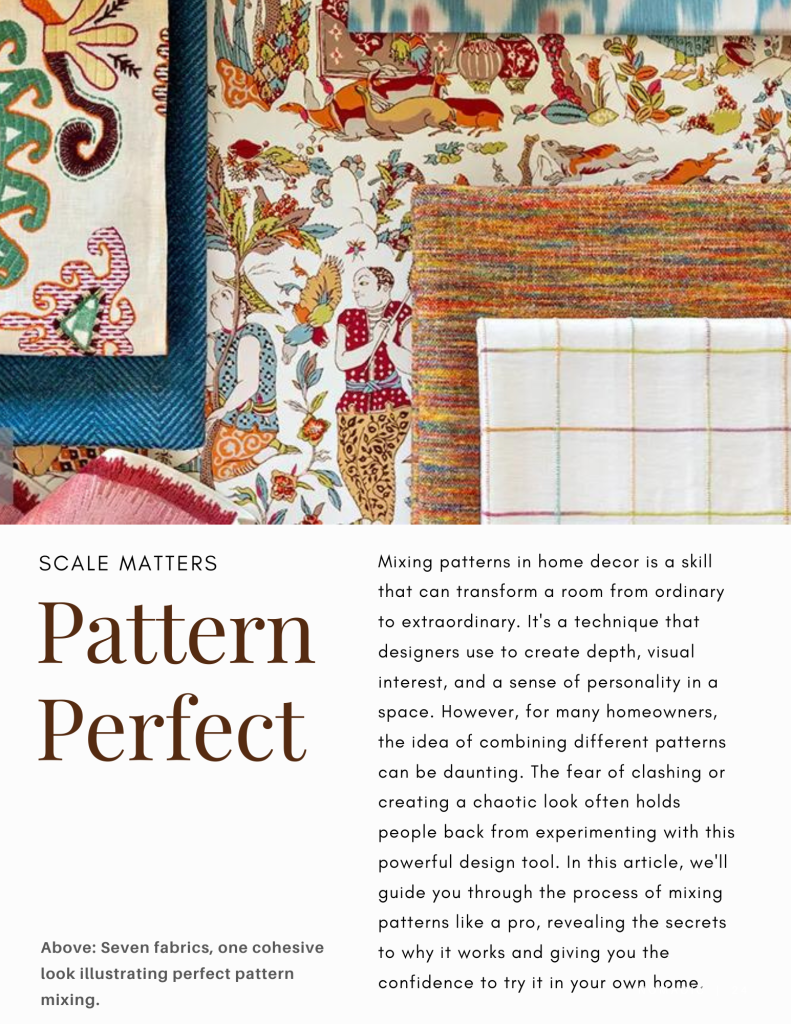
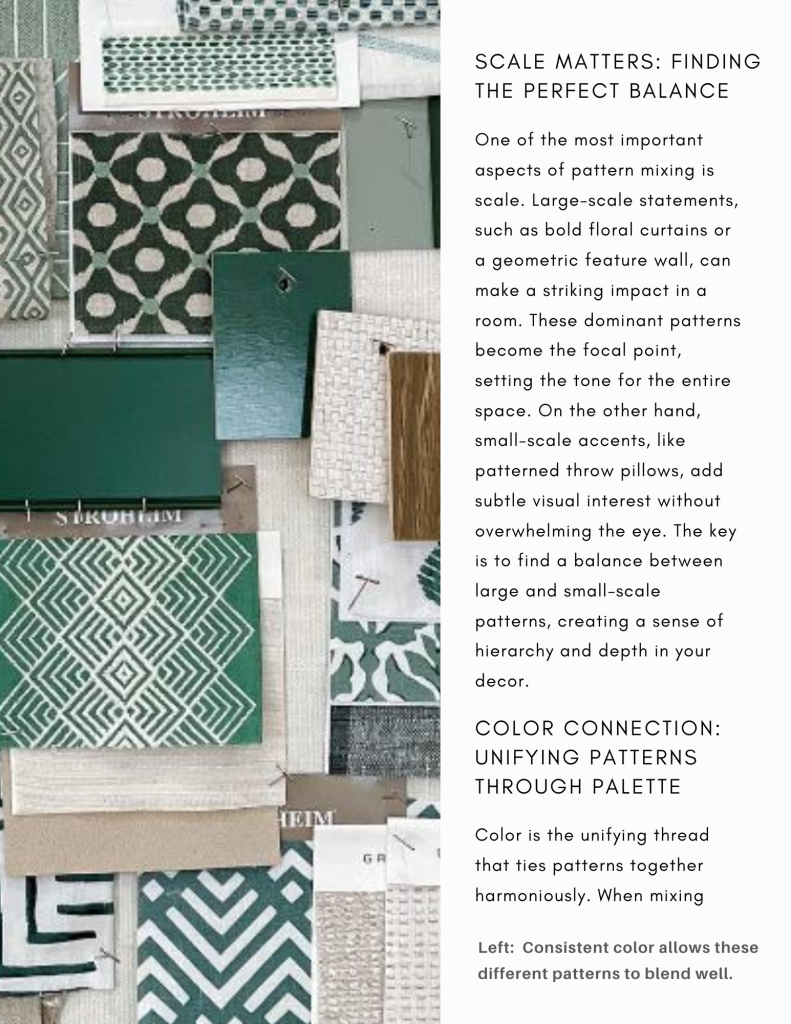
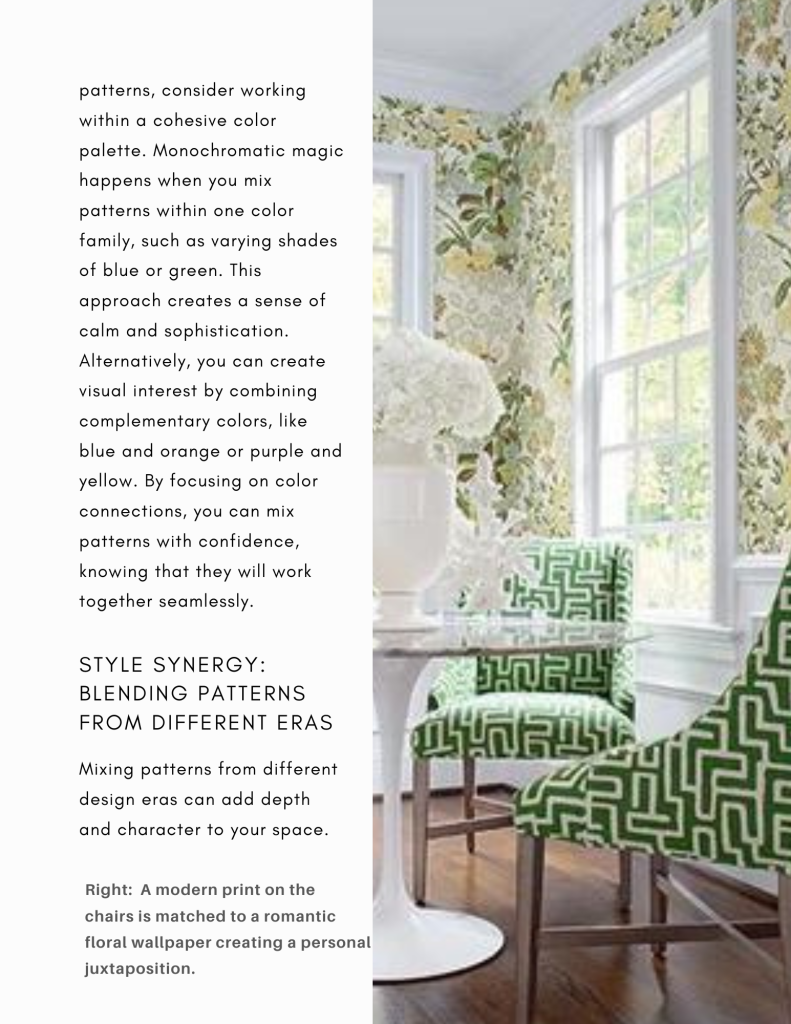
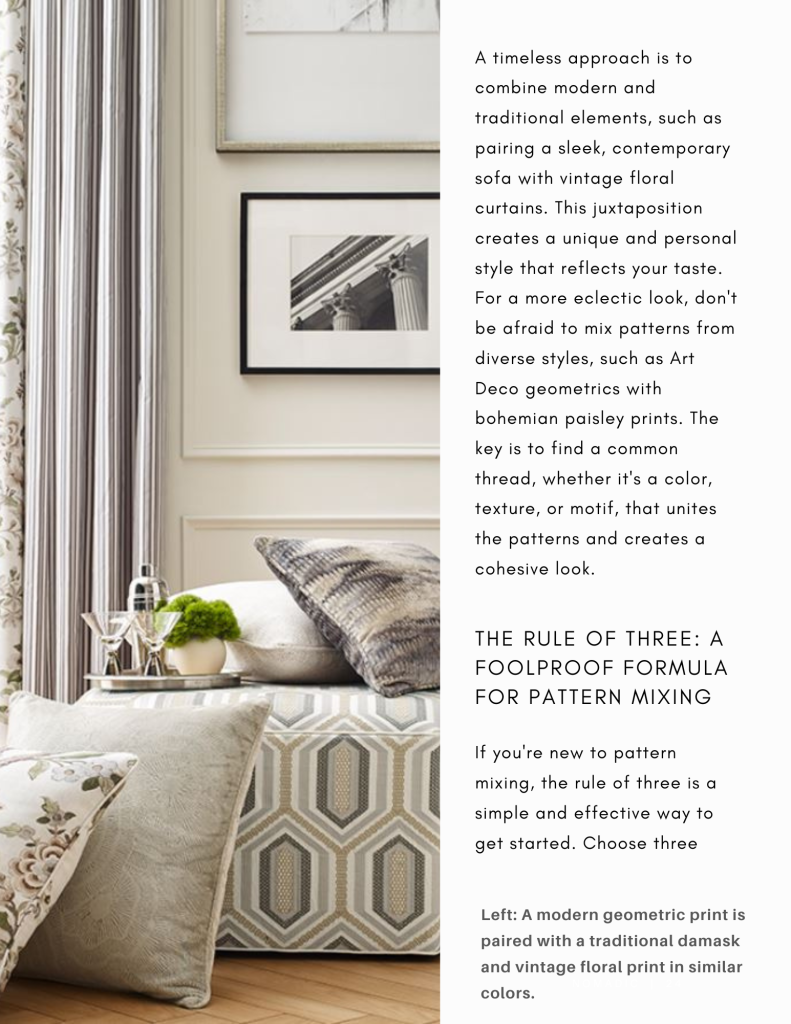
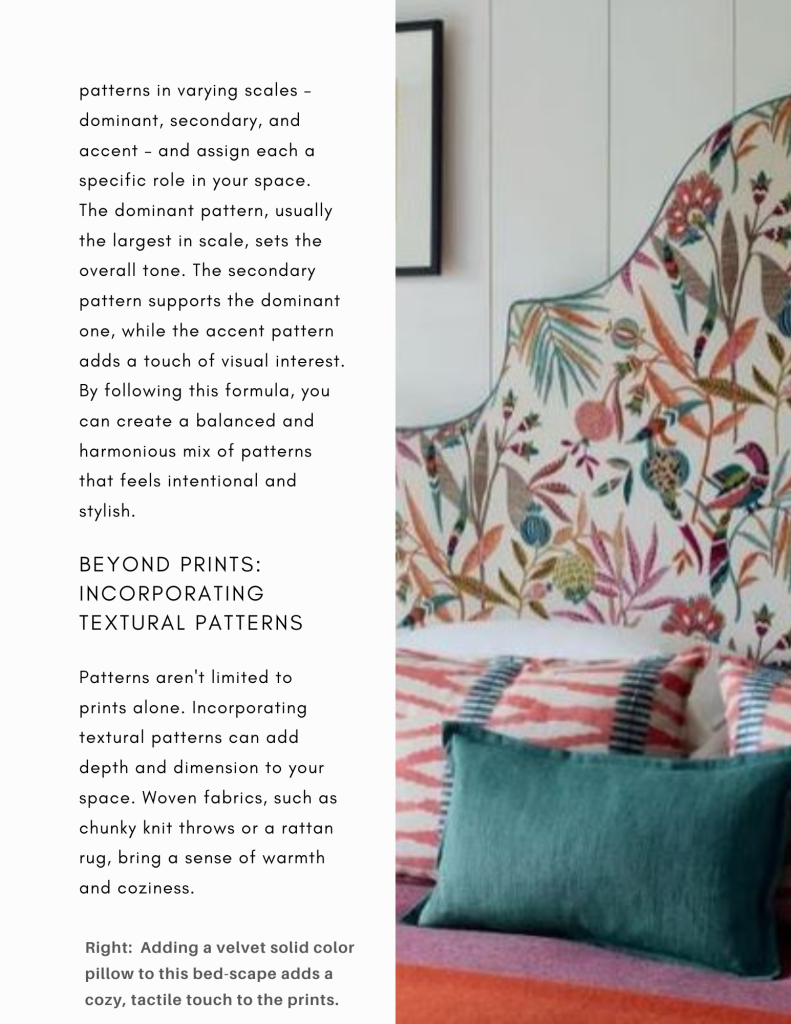
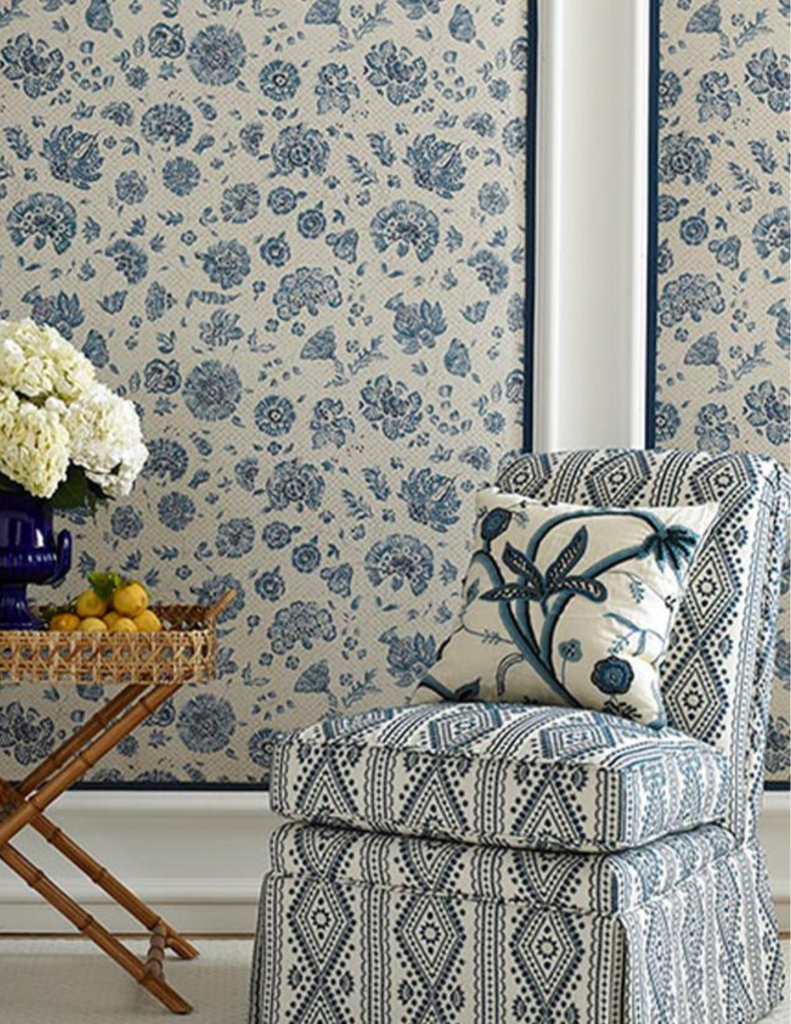
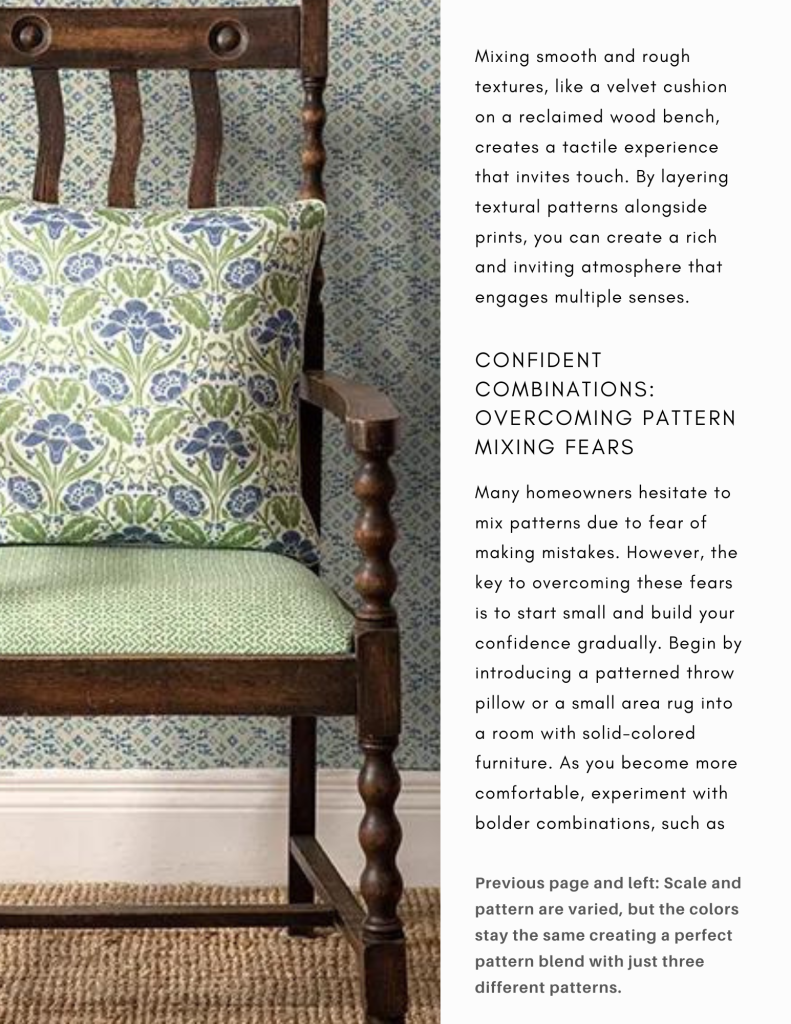
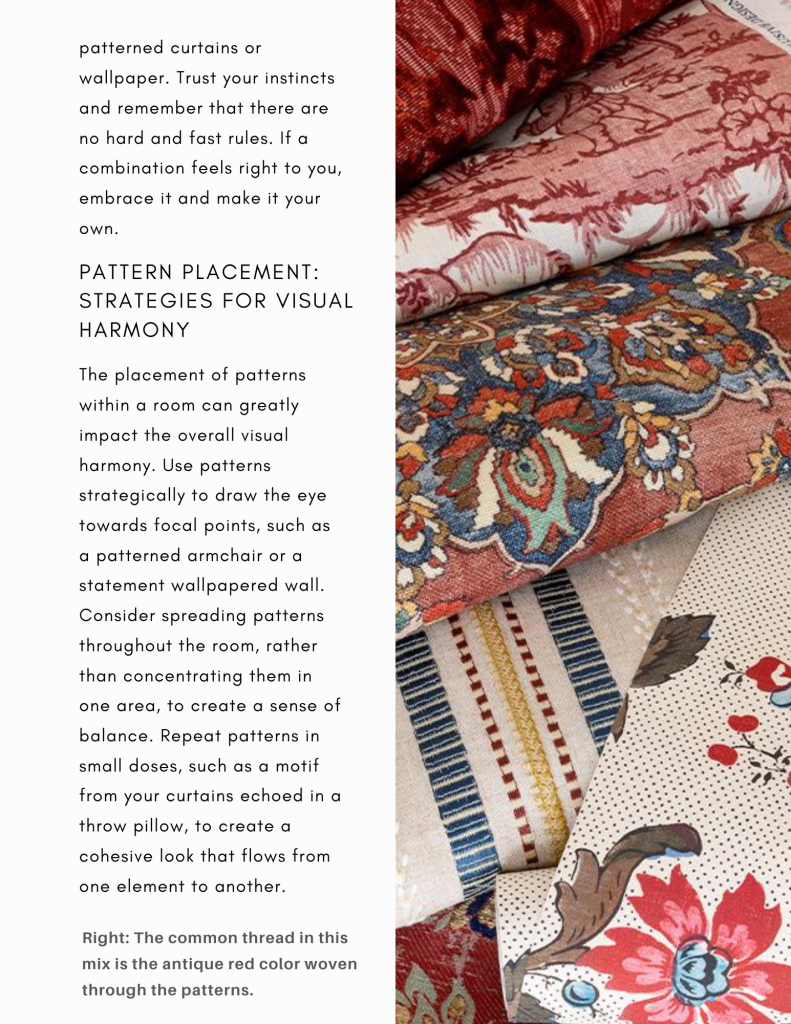

Complete text:
Pattern Play:
Mastering the Mix
At its core, pattern mixing is all about creating visual interest and excitement within a space. By combining different patterns, colors, and textures, you add depth, dimension, and personality to your decor, transforming an ordinary room into a vibrant and dynamic expression of your unique style.
Pattern mixing is a powerful tool in home decor, allowing you to create spaces that are visually captivating, personalized, and full of life. However, for many homeowners, the thought of combining different patterns can be intimidating. Fear not! With a few key principles and a dash of creativity, anyone can master the art of pattern mixing. In this article, we’ll explore the secrets to creating harmonious and stylish spaces by unlocking the potential of patterns.
Scale Matters: Finding the Perfect Balance
One of the most important aspects of pattern mixing is scale. Large-scale statements, such as bold floral curtains or a geometric feature wall, can make a striking impact in a room. These dominant patterns become the focal point, setting the tone for the entire space. On the other hand, small-scale accents, like patterned throw pillows, add subtle visual interest without overwhelming the eye. The key is to find a balance between large and small-scale patterns, creating a sense of hierarchy and depth in your decor.
Color Connection: Unifying Patterns Through Palette
Color is the unifying thread that ties patterns together harmoniously. When mixing patterns, consider working within a cohesive color palette.
Monochromatic magic happens when you mix patterns within one color family, such as varying shades of blue or green. This approach creates a sense of calm and sophistication. Alternatively, you can create visual interest by combining complementary colors, like blue and orange or purple and yellow. By focusing on color connections, you can mix patterns with confidence, knowing that they will work together seamlessly.
Style Synergy: Blending Patterns from Different Eras
Mixing patterns from different design eras can add depth and character to your space. A timeless approach is to combine modern and traditional elements, such as pairing a sleek, contemporary sofa with vintage floral curtains. This juxtaposition creates a unique and personal style that reflects your taste. For a more eclectic look, don’t be afraid to mix patterns from diverse styles, such as Art Deco geometrics with bohemian paisley prints. The key is to find a common thread, whether it’s a color, texture, or motif, that unites the patterns and creates a cohesive look.
The Rule of Three: A Foolproof Formula for Pattern Mixing
If you’re new to pattern mixing, the rule of three is a simple and effective way to get started. Choose three patterns in varying scales – dominant, secondary, and accent – and assign each a specific role in your space. The dominant pattern, usually the largest in scale, sets the overall tone. The secondary pattern supports the dominant one, while the accent pattern adds a touch of visual interest. By following this formula, you can create a balanced and harmonious mix of patterns that feels intentional and stylish.
Beyond Prints: Incorporating Textural Patterns
Patterns aren’t limited to prints alone. Incorporating textural patterns can add depth and dimension to your space. Woven fabrics, such as chunky knit throws or a rattan rug, bring a sense of warmth and coziness. Mixing smooth and rough textures, like a velvet cushion on a reclaimed wood bench, creates a tactile experience that invites touch. By layering textural patterns alongside prints, you can create a rich and inviting atmosphere that engages multiple senses.
Confident Combinations: Overcoming Pattern Mixing Fears
Many homeowners hesitate to mix patterns due to fear of making mistakes. However, the key to overcoming these fears is to start small and build your confidence gradually. Begin by introducing a patterned throw pillow or a small area rug into a room with solid-colored furniture. As you become more comfortable, experiment with bolder combinations, such as patterned curtains or wallpaper. Trust your instincts and remember that there are no hard and fast rules. If a combination feels right to you, embrace it and make it your own.
Pattern Placement: Strategies for Visual Harmony
The placement of patterns within a room can greatly impact the overall visual harmony. Use patterns strategically to draw the eye towards focal points, such as a patterned armchair or a statement wallpapered wall. Consider spreading patterns throughout the room, rather than concentrating them in one area, to create a sense of balance. Repeat patterns in small doses, such as a motif from your curtains echoed in a throw pillow, to create a cohesive look that flows from one element to another.
Pattern mixing is an art form that can transform your home into a captivating and personal sanctuary. By understanding the principles of scale, color, style, and texture, you can confidently create spaces that are visually striking and uniquely yours. Remember to start small, trust your instincts, and have fun with the process. Embrace the power of pattern mixing and watch as your home comes alive with character and charm.
With a little practice and experimentation, you’ll soon find yourself mixing patterns like a pro. Don’t be afraid to break the rules and create combinations that speak to your personal style. After all, your home should be a reflection of you – a space that tells your story and brings you joy.
So go ahead, unleash your creativity, and let your personality shine through the art of pattern mixing.
